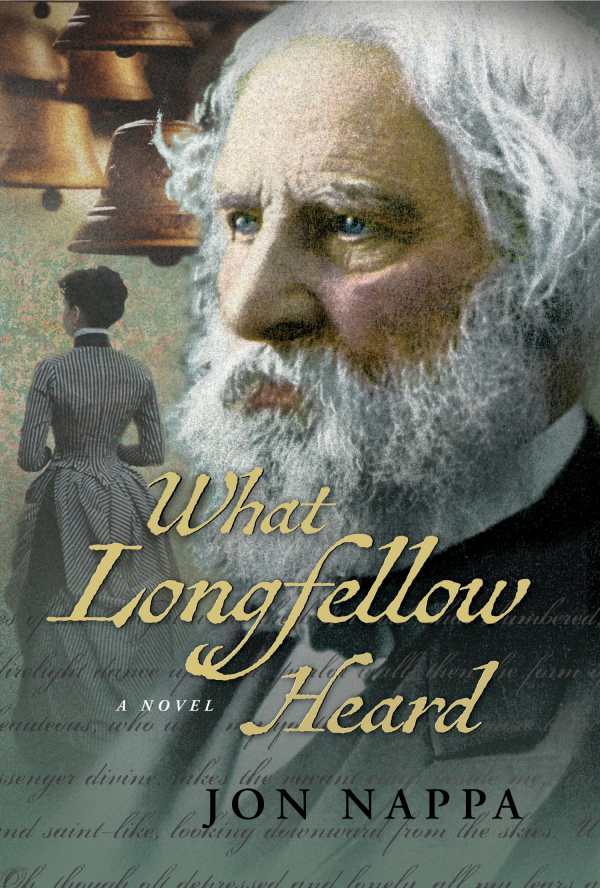
What Longfellow Heard
The captivating historical novel What Longfellow Heard covers the nineteenth-century life and poetry of Henry Wadsworth Longfellow.
Jon Nappa’s historical novel What Longfellow Heard is an intriguing portrayal of poet Henry Wadsworth Longfellow’s life.
The book follows Longfellow from his childhood to his old age; its main focus is on his development as a poet. Enthralling, lively portions of the book are devoted to his artistry and process, focusing on the events—both historical, like the abolitionist movement, and personal—that inspired his best known poems. Longfellow’s courtships of, and marriages to, Mary Potter and Fanny Appleton play a key role, and are depicted in a sweet, amusing fashion; their inclusion also involves heartbreaks. Longfellow twice becomes a widower, and his grief and depression are handled in an empathetic manner.
The tumultuous events of the nineteenth century are a vibrant background for Longfellow’s fascinating story. But the book is paced in a meandering, erratic fashion. Some periods of Longfellow’s life, including his young adulthood, are covered in extraneous detail; others, such as his early childhood, and the eighteen-year period between his second marriage and his wife’s death, are glossed over in a handful of pages.
Intriguing historical figures contribute to Longfellow’s tale, including members of the Five of Clubs, an informal intellectual group that included other men who were significant figures of the period themselves. Among these, Charles Sumner, the US senator and abolitionist, and Cornelius Conway Felton, the president of Harvard University and regent of the Smithsonian Institution, stand out. They are shown playing a key role in the development of Longfellow’s political views because of their conversations and debates with him. Indeed, it is at Sumner’s request that Longfellow writes and publishes an anthology titled Poems on Slavery as a contribution to the abolitionist movement. But the relationship between the members of the group is also characterized by genuine, touching friendship, which runs the gamut from fun banter to members offering support to each other during hard times.
A significant portion of the book is devoted to Longfellow’s reflections on artistry, fame, and inspiration. From the beginning, and even more so after painful events like the deaths of his wives, his musings on the purpose of art and the artist, and the artistic process, constitute a thread that underlies the novel as a whole. His lectures at Harvard also allow for in-depth discussions about this topic.
The book’s first few pages, which are set during Longfellow’s childhood and adolescence, feature run-on sentences and stilted paragraphs. This issue vanishes as the novel progresses, though; by the time Longfellow reaches his adulthood, the book has settled into shorter sentences and less grandiose diction, helping it to flow. It comes to have a poetic quality itself, in particular when it comes to Longfellow’s letters, which are full of metaphors and analogies that enliven the narrative.
Ultimately, the book is equal parts narrative and metaliterary reflection. The events in Longfellow’s life, and the creation of his poems, wend together in an intrinsic manner, influencing each other until it is no longer quite clear, even to Longfellow himself (who is ashamed of how his mind conjures up verses during moments of grief), which is more significant to him. The novel’s ending, set during the Civil War, is bittersweet. Longfellow’s grief and weariness are tangible, but so is his love for his family and his hope for a better world.
The captivating historical novel What Longfellow Heard covers the nineteenth-century life and poetry of Henry Wadsworth Longfellow.
Reviewed by
Carolina Ciucci
Disclosure: This article is not an endorsement, but a review. The publisher of this book provided free copies of the book and paid a small fee to have their book reviewed by a professional reviewer. Foreword Reviews and Clarion Reviews make no guarantee that the publisher will receive a positive review. Foreword Magazine, Inc. is disclosing this in accordance with the Federal Trade Commission’s 16 CFR, Part 255.
